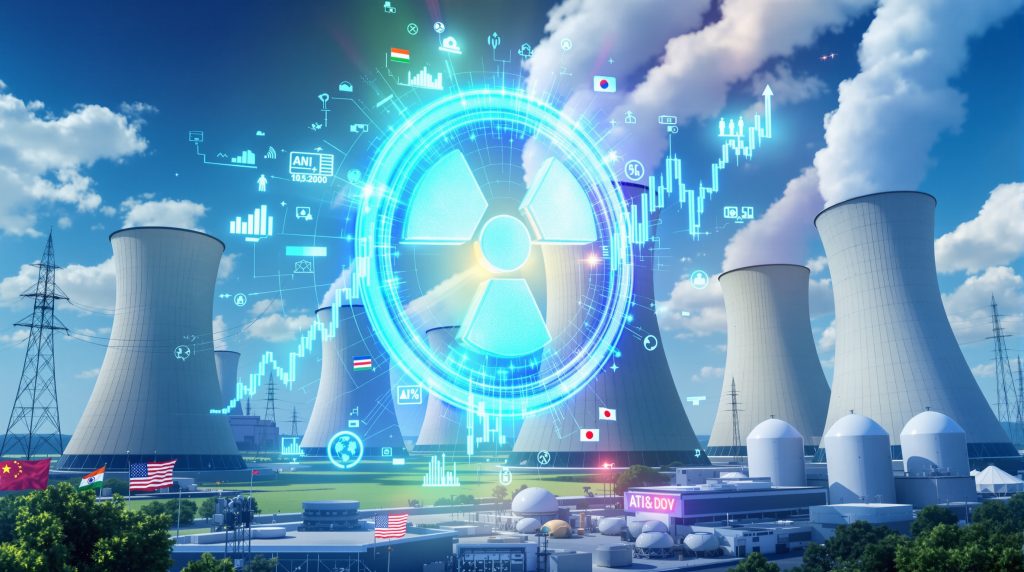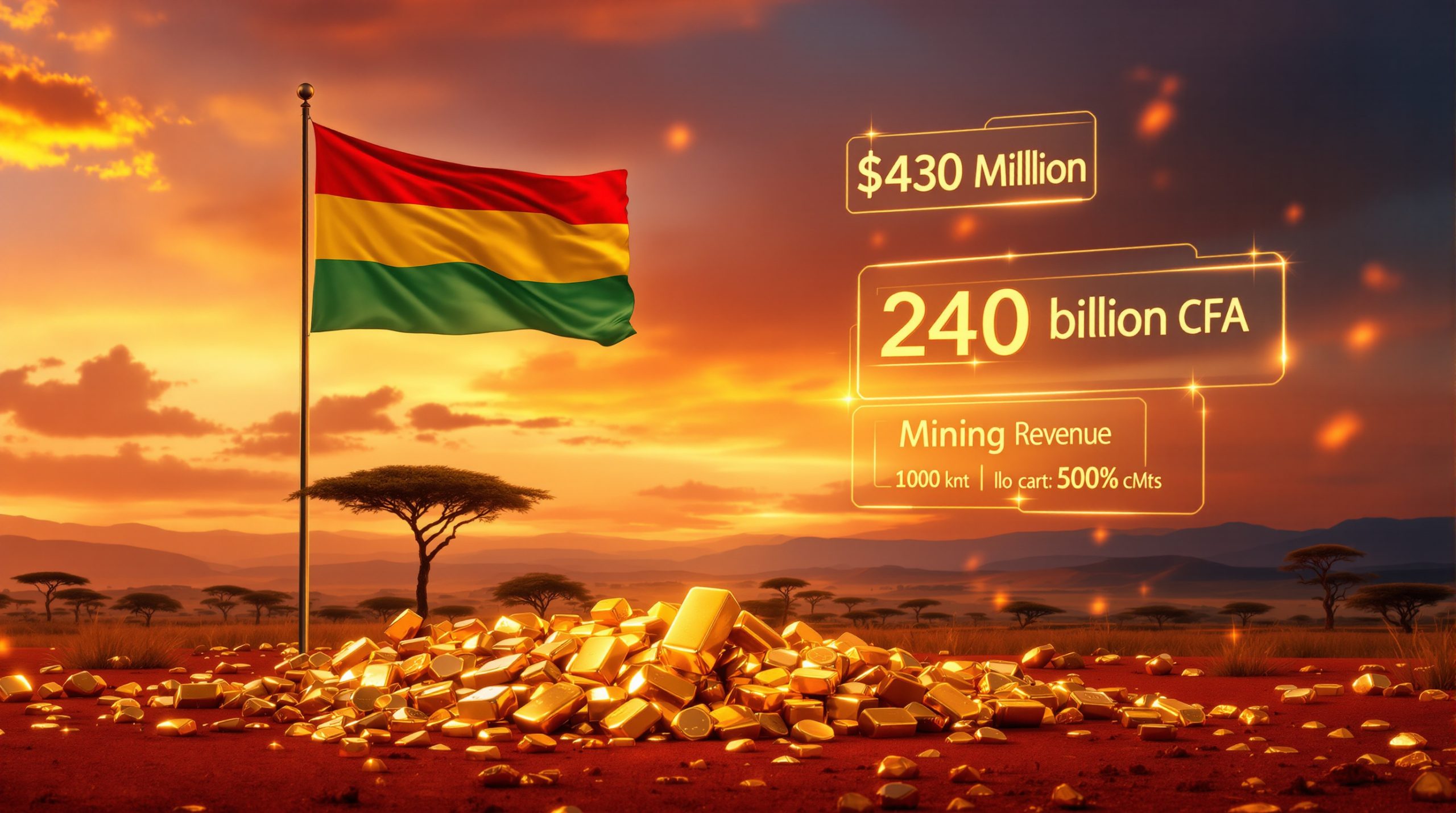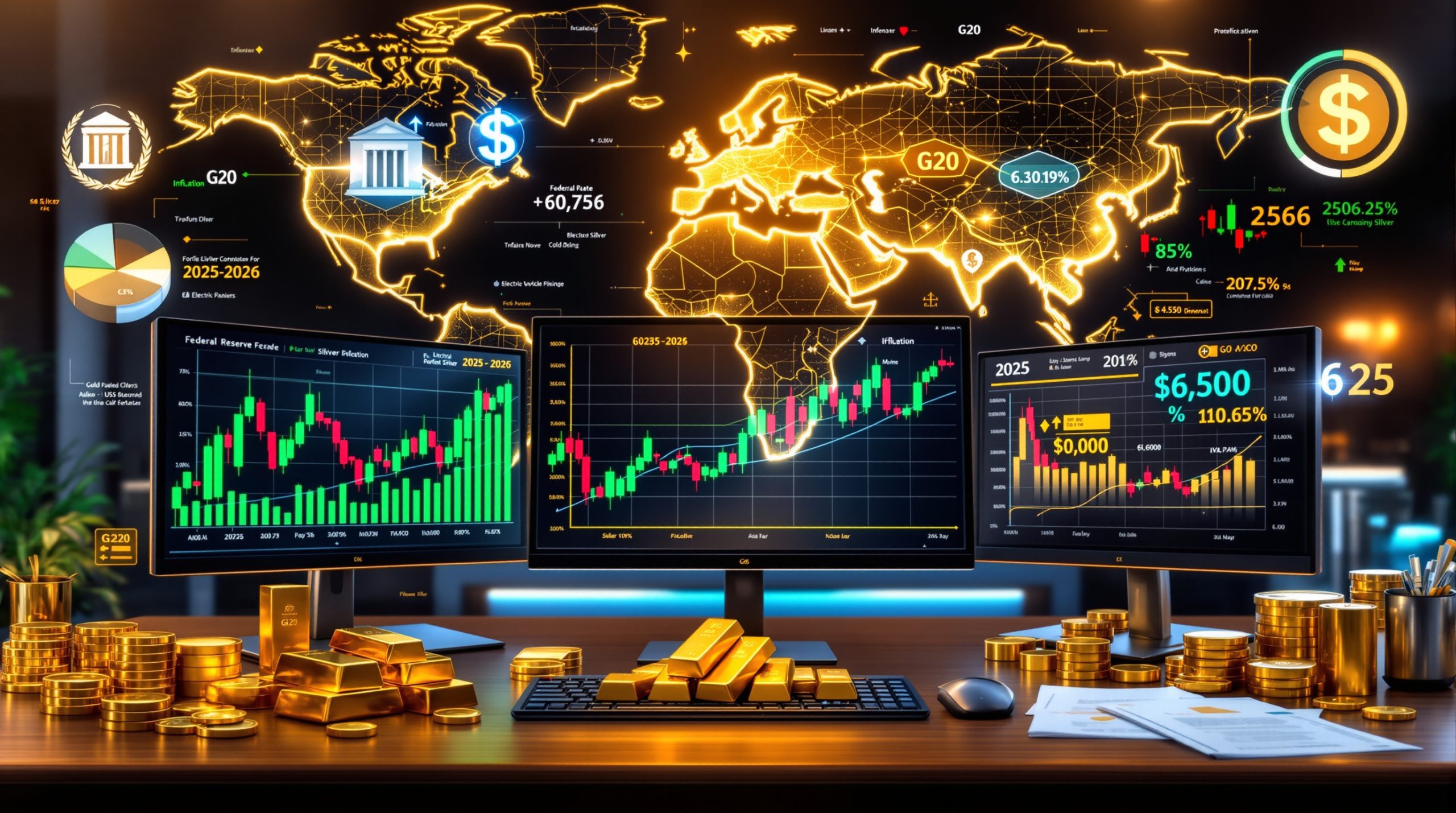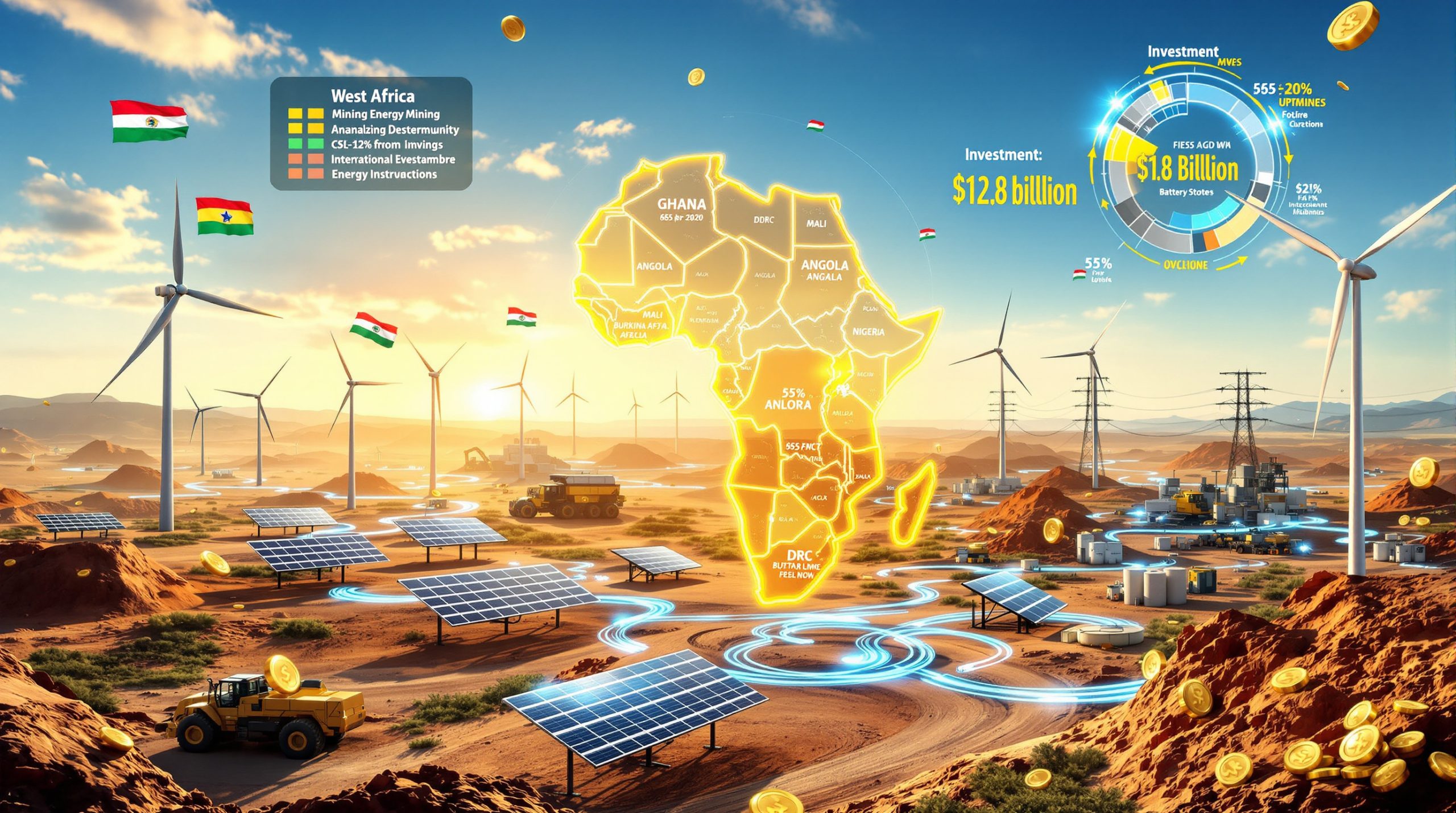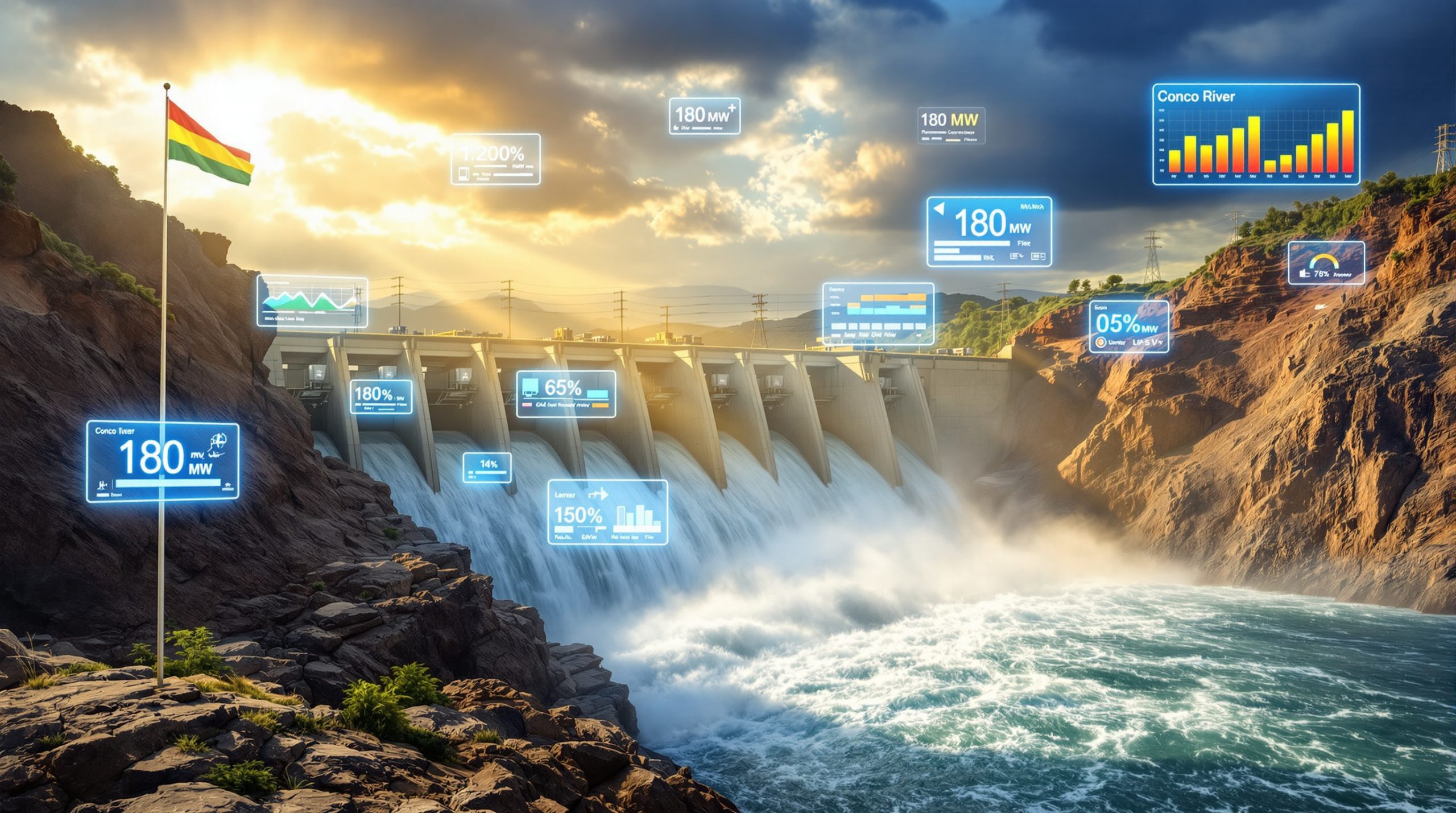Uranium Market Revival: How Nuclear Energy's Resurgence is Driving the 2025 Uranium Boom
Why is Uranium Surging in 2025?
The uranium market is experiencing a remarkable resurgence in 2025, with prices climbing steadily throughout the year. This revival comes after years of underinvestment and suppressed prices that characterized much of the previous decade. The current upswing is driven by a fundamental shift in global energy priorities, with nuclear power once again taking center stage in the world's clean energy transition.
The spot price of uranium has risen from approximately $63.50 per pound in early 2025 to nearly $79 by mid-year, representing a significant rebound that has caught the attention of investors and industry participants alike. This price movement reflects growing recognition of uranium's critical role in achieving global decarbonization targets while meeting increasing energy demands.
American Uranium stock reported a 30% jump in September 2025, highlighting the market's enthusiasm for companies positioned to benefit from the sector's revival as uranium surges as nuclear revival gains pace.
How is Nuclear Power Contributing to Global Energy Security?
The Strategic Importance of Nuclear Energy
Nuclear energy has reemerged as a cornerstone of energy security strategies worldwide. Unlike intermittent renewable sources, nuclear power plants provide reliable baseload generation with minimal carbon emissions. This combination of reliability and environmental performance has prompted governments to reassess nuclear's role in their energy portfolios.
The global nuclear capacity is projected to expand significantly, with forecasts indicating a 28-30% increase in uranium market volatility by 2030 and more than doubling by 2040. This growth trajectory is supported by both existing reactor restarts and ambitious new build programs across multiple continents.
Global Nuclear Reactor Expansion
The nuclear renaissance is evident in the accelerating pace of reactor construction and planning worldwide:
-
China: Continuing its aggressive nuclear expansion with over 20 reactors under construction and plans for dozens more by 2035
-
India: Accelerating its nuclear program with multiple reactors under development to meet rapidly growing electricity demand
-
South Korea: Reversing previous phase-out plans in favor of nuclear expansion
-
Japan: Progressing with reactor restarts following post-Fukushima safety upgrades
-
United States: Extending licenses for existing plants while advancing next-generation reactor technologies
-
Europe: Several countries reconsidering nuclear as part of their energy security strategy
This global expansion represents a significant shift from the cautious approach that characterized the post-Fukushima era, reflecting renewed confidence in nuclear technology's safety and economic viability.
What Government Policies are Accelerating Nuclear Adoption?
U.S. Policy Initiatives Driving Nuclear Growth
The United States has implemented several landmark policies to revitalize its nuclear sector:
-
ADVANCE Act: Streamlining regulatory processes for advanced nuclear technologies
-
Executive Orders: Directing federal agencies to prioritize nuclear energy development
-
Domestic Uranium Reserve: Establishing strategic stockpiles to reduce dependency on imports
-
Production Tax Credits: Providing financial incentives for existing and new nuclear generation
These policy measures aim to address historical challenges in nuclear deployment while positioning the U.S. as a leader in next-generation nuclear technologies.
International Policy Support
Similar supportive policies are emerging globally:
-
European Taxonomy: Including nuclear energy as a sustainable investment
-
UK's Nuclear Acceleration Office: Streamlining approval processes for new nuclear projects
-
Japanese Government Incentives: Supporting reactor restarts and new builds
-
Canadian SMR Action Plan: Facilitating small modular reactor deployment
This coordinated policy environment contrasts sharply with the fragmented approach that characterized previous decades, creating a more stable foundation for nuclear industry growth.
How is Technology Transforming the Nuclear Sector?
Small Modular Reactors: Changing the Nuclear Landscape
Small Modular Reactors (SMRs) represent a paradigm shift in nuclear deployment:
-
Reduced Capital Requirements: Lower upfront costs compared to conventional large reactors
-
Flexible Deployment: Suitable for diverse locations and grid capacities
-
Enhanced Safety Features: Incorporating passive safety systems
-
Faster Construction: Standardized manufacturing reducing build times
-
Scalable Capacity: Ability to add modules incrementally as demand grows
Several SMR designs have progressed through regulatory approval stages in 2025, with initial deployments expected within the next 2-3 years. This advancement promises to expand nuclear energy's applications beyond traditional large-scale power generation.
Advanced Reactor Technologies
Beyond SMRs, several advanced reactor technologies are approaching commercialization:
-
Molten Salt Reactors: Offering enhanced safety and fuel efficiency
-
High-Temperature Gas Reactors: Providing process heat for industrial applications
-
Fast Neutron Reactors: Enabling more complete fuel utilization
-
Microreactors: Targeting remote locations and specialized applications
These technologies expand nuclear energy's potential applications while addressing historical concerns about waste management and resource utilization.
What New Markets are Driving Uranium Demand?
AI and Data Centers: Emerging Energy Consumers
The explosive growth of artificial intelligence and cloud computing has created unprecedented electricity demand:
-
Microsoft: Partnering with nuclear developers to power AI operations
-
Google: Exploring nuclear options for data center expansion
-
Amazon: Evaluating small modular reactors for cloud infrastructure
-
Meta: Considering nuclear power purchase agreements
These tech giants require enormous amounts of reliable, carbon-free electricity—precisely what nuclear power provides. Industry analysts estimate that AI-related electricity consumption could increase global power demand by 5-8% by 2030, creating a significant new market for nuclear generation.
Hydrogen Production and Industrial Heat
Nuclear energy is increasingly viewed as an ideal source for:
-
Green Hydrogen Production: Using nuclear electricity for electrolysis
-
Industrial Process Heat: Providing high-temperature heat for manufacturing
-
Desalination: Powering water purification in water-scarce regions
-
District Heating: Supplying residential and commercial heating networks
These applications expand uranium demand beyond traditional electricity generation, creating multiple growth vectors for the nuclear industry.
What Supply Challenges are Supporting Uranium Prices?
Production Constraints and Mine Development Timelines
The uranium supply chain faces significant constraints:
-
Legacy of Underinvestment: Years of low prices led to project deferrals and mine closures
-
Long Development Timelines: New mines typically require 7-10 years from discovery to production
-
Permitting Challenges: Regulatory processes adding complexity to project advancement
-
Infrastructure Requirements: Specialized transportation and processing facilities needed
-
Technical Expertise Shortages: Limited pool of experienced uranium mining professionals
These factors create a structural supply deficit that cannot be quickly resolved, supporting higher uranium prices even as demand accelerates.
Geopolitical Supply Risks
Geopolitical factors further complicate the supply picture:
-
Concentration of Production: Over 70% of primary production coming from just five countries
-
Kazakhstan Dominance: Accounting for approximately 40% of global production
-
Russian Processing Capacity: Controlling significant conversion and enrichment infrastructure
-
Trade Restrictions: Western sanctions affecting Russian nuclear fuel supply chains
-
Resource Nationalism: Producer countries implementing export controls and domestic prioritization
These geopolitical dynamics have prompted uranium consumers to diversify supply sources and establish strategic reserves, further supporting price strength. Furthermore, the recent US Senate uranium ban on Russian imports has created additional pressure on global supply chains.
How are Investment Patterns Changing in the Uranium Sector?
Capital Flows into Uranium Equities
The uranium sector has attracted significant investment capital:
-
Specialist Funds: Dedicated uranium investment vehicles expanding assets under management
-
Institutional Interest: Pension funds and asset managers increasing exposure
-
Retail Participation: Growing individual investor interest in uranium stocks
-
Strategic Investments: Utilities and nuclear operators taking equity positions in miners
-
Merger & Acquisition Activity: Consolidation among junior and mid-tier producers
This influx of capital is helping finance project development and capacity expansion, though the long lead times for new production mean that supply responses remain constrained in the near term.
Physical Uranium Investment
Beyond equities, direct investment in physical uranium has emerged as a significant market factor:
-
Investment Trusts: Vehicles purchasing and holding physical uranium
-
ETFs: Exchange-traded funds with physical uranium backing
-
Corporate Strategic Reserves: Companies establishing uranium inventories
-
Sovereign Stockpiles: Nations building strategic uranium reserves
These physical holdings effectively remove material from the market, tightening the supply-demand balance and supporting price appreciation. Many investors are now exploring various uranium investment strategies to capitalize on the nuclear renaissance.
What Price Forecasts are Analysts Projecting?
Near-Term Price Outlook
Industry analysts project continued uranium price strength:
-
End-2025 Forecasts: Consensus expectations of $90-100 per pound
-
2026 Projections: Potential for prices to exceed $110 per pound
-
Long-Term Contract Pricing: Utilities securing supply at $75-85 per pound for multi-year terms
-
Price Volatility: Increased trading ranges as market participants adjust to new fundamentals
-
Regional Premiums: Emerging price differentials based on origin and security of supply
These price forecasts reflect the structural imbalance between growing demand and constrained supply, with limited ability for rapid production increases.
Long-Term Market Dynamics
Looking beyond 2025, several factors will influence uranium market dynamics:
-
New Mine Development: Projects advancing through development pipeline
-
Enrichment Capacity Expansion: Addressing potential bottlenecks in the fuel cycle
-
Reactor Lifetime Extensions: Extending operating licenses for existing fleet
-
Advanced Fuel Types: Higher-assay low-enriched uranium (HALEU) requirements
-
Secondary Supplies: Declining inventories and underfeeding capacity
The consensus view suggests sustained higher uranium prices through at least 2030, with potential for further appreciation depending on the pace of nuclear deployment and supply development. Recent developments like the Paladin Energy uranium halt in Namibia further highlight the supply challenges facing the industry.
How Does the Uranium Market Outlook Compare to Other Energy Commodities?
Uranium vs. Renewable Energy Materials
Uranium presents a distinct investment case compared to materials used in renewable energy:
| Aspect | Uranium | Lithium | Copper | Rare Earths |
|---|---|---|---|---|
| Supply Concentration | High | Moderate | Low | Very High |
| Development Timeline | 7-10 years | 3-5 years | 5-8 years | 5-7 years |
| Recycling Potential | Limited | Growing | Extensive | Limited |
| Demand Growth (2025-2030) | 28-30% | 25-35% | 20-25% | 15-20% |
| Price Volatility | Moderate | High | Moderate | High |
| Substitution Potential | None | Limited | Limited | Moderate |
This comparison highlights uranium's unique position with inelastic demand, limited substitution options, and significant supply constraints.
Energy Transition Investment Thesis
Within the broader energy transition investment landscape, uranium offers:
-
Baseload Clean Energy Exposure: Complementing intermittent renewable investments
-
Supply Chain Security Focus: Aligning with strategic resource priorities
-
Long-Term Demand Visibility: Clear pathway for multi-decade growth
-
Inflation Protection: Hard asset characteristics with limited correlation to broader markets
-
ESG Considerations: Contributing to decarbonization while requiring assessment of waste management
These characteristics position uranium as a distinctive component of energy transition investment portfolios, offering exposure to nuclear's growing role in the global energy mix.
What are the Key Takeaways for Investors?
The uranium market's resurgence in 2025 represents more than a cyclical recovery—it signals a fundamental reappraisal of nuclear energy's role in addressing climate change and energy security challenges. The combination of policy support, technological innovation, and expanding applications creates a robust foundation for sustained uranium demand growth.
For investors, the sector offers exposure to a critical energy transition material with distinctive supply-demand dynamics. While volatility should be expected, the structural factors supporting higher uranium prices appear firmly established, with limited ability for rapid supply responses to dampen price appreciation.
As the nuclear renaissance gains momentum, uranium surges as nuclear revival gains pace, highlighting its strategic importance in the global energy landscape and supporting the case for its inclusion in forward-looking investment portfolios focused on the evolving energy transition. Meanwhile, US uranium production trends show promising developments in domestic supply capabilities, potentially reshaping global market dynamics.
FAQ: Understanding the Uranium Market Revival
What is driving the current uranium price surge?
The uranium price surge is driven by multiple factors converging simultaneously: increasing nuclear power capacity globally, supportive government policies, growing applications in sectors like AI data centers, and constrained uranium supply following years of underinvestment in production capacity.
How do small modular reactors impact uranium demand?
Small modular reactors (SMRs) expand the potential applications for nuclear power beyond traditional large-scale plants, enabling deployment in more diverse settings and potentially accelerating nuclear adoption. While individual SMRs use less uranium than conventional reactors, their broader deployment could significantly increase aggregate uranium demand.
What role does nuclear power play in addressing climate change?
Nuclear power provides reliable, baseload electricity generation with minimal carbon emissions throughout its lifecycle. This combination makes it a valuable complement to intermittent renewable sources in achieving decarbonization goals while maintaining grid stability and reliability.
How does uranium mining impact the environment?
Modern uranium mining employs advanced techniques to minimize environmental impacts, including in-situ recovery methods that reduce surface disturbance. Regulatory frameworks require comprehensive environmental management plans, including site rehabilitation. The environmental footprint of uranium mining should be considered alongside the significant carbon emissions avoided through nuclear power generation.
What are the major risks to the uranium market outlook?
Key risks include potential policy shifts following political changes, delays in nuclear construction programs, technological disruptions in alternative energy sources, and public acceptance challenges. Additionally, significant new uranium discoveries or extraction technology breakthroughs could eventually increase supply and moderate price growth.
How does nuclear waste management affect the industry's growth?
While waste management remains a challenge, significant progress has been made in developing both interim storage solutions and permanent disposal facilities. Advanced reactor designs also aim to reduce waste volumes and radioactivity. Countries with clear waste management frameworks tend to see stronger public support for nuclear expansion.
Are You Looking to Invest in the Next Significant Mineral Discovery?
Discover why major mining finds like those from De Grey Mining and WA1 Resources can lead to exceptional returns by exploring Discovery Alert's dedicated discoveries page, where their proprietary Discovery IQ model transforms complex ASX announcements into actionable investment insights. Begin your 30-day free trial today at https://discoveryalert.com.au/discoveries/ to position yourself ahead of the market.
